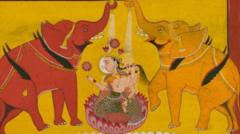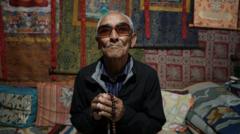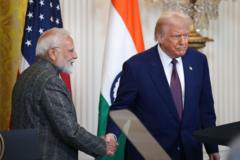The British Museum's exhibition titled "Ancient India: Living Traditions" invites visitors to experience the dynamic transformation of Indian spiritual art, revealing a journey through time. Spanning from 200 BC to AD 600, the collection displays an impressive range of sculptures, paintings, and manuscripts that illustrate the interplay of three major religions: Hinduism, Buddhism, and Jainism. During this pivotal era, artists transitioned from symbolic representations of divine figures to more recognizable human forms, highlighting a significant cultural shift.
### Spiritual Odyssey: India's Art Through the Ages on Display

### Spiritual Odyssey: India's Art Through the Ages on Display
A new exhibition at the British Museum in London explores the evolution of spiritual art in India, featuring 189 artifacts from ancient traditions.
Curator Sushma Jansari leads a tour through five thematic sections of the exhibition that starts with nature spirits, evolves through each religion's artistic expressions, and culminates in the global dissemination of these art forms to regions such as Cambodia and China. Among the standout pieces is a remarkable two-sided sandstone panel showcasing the artistic evolution of the Buddha. The transformation visible on the panel, which contrasts earlier symbolic depictions with later human representations, emphasizes the significant change that occurred in visual language over centuries.
The exhibition also investigates the representation of deities within Hindu and Jain art, showcasing bronze statues and sandstone images of divine figures that reflect evolving religious iconography. Notably, the show presents the first comprehensive look at the artistic traditions of all three religions together, a groundbreaking approach compared to previous exhibitions on the subject.
Designed with a multi-sensory experience in mind, the exhibition incorporates various elements to immerse visitors in the essence of active religious practice, including scents, nature sounds, and artistic visuals that evoke serenity amidst sacred spaces. Throughout the galleries, images of contemporary worshipers underscore the ongoing relevance of these ancient traditions for millions today.
"Ancient India: Living Traditions" runs from May 22 to October 19 at the British Museum, offering a unique opportunity for audiences to engage with the profound history of India's spiritual art and its enduring legacy.
The exhibition also investigates the representation of deities within Hindu and Jain art, showcasing bronze statues and sandstone images of divine figures that reflect evolving religious iconography. Notably, the show presents the first comprehensive look at the artistic traditions of all three religions together, a groundbreaking approach compared to previous exhibitions on the subject.
Designed with a multi-sensory experience in mind, the exhibition incorporates various elements to immerse visitors in the essence of active religious practice, including scents, nature sounds, and artistic visuals that evoke serenity amidst sacred spaces. Throughout the galleries, images of contemporary worshipers underscore the ongoing relevance of these ancient traditions for millions today.
"Ancient India: Living Traditions" runs from May 22 to October 19 at the British Museum, offering a unique opportunity for audiences to engage with the profound history of India's spiritual art and its enduring legacy.






















